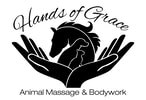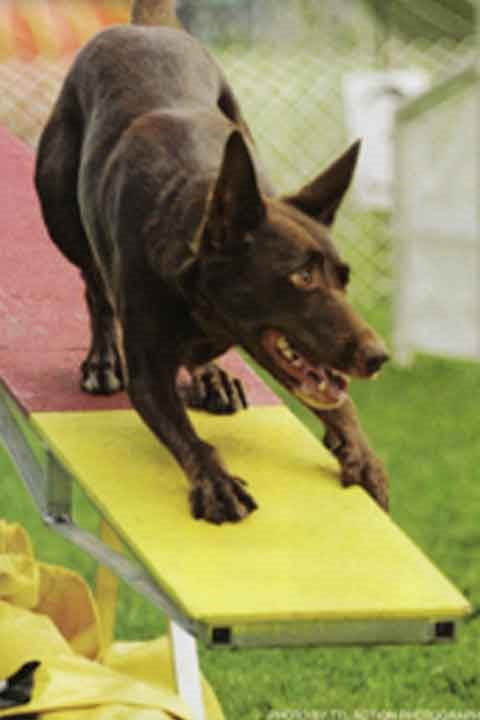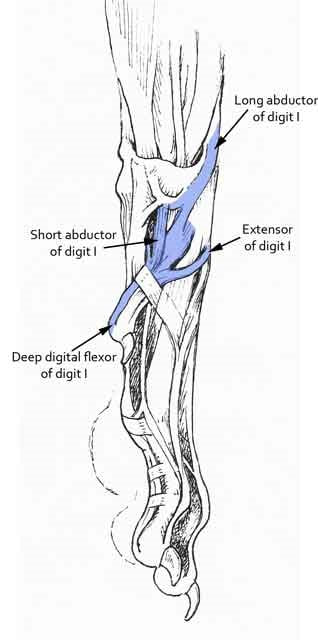|
Week 1: These are questions I've had to answer as part of my training requirements.
Q: Describe your childhood interaction/connection with animals. A: I have always loved Doberman Pinchers. As a young child I would talk about them and beg my parents for one (we had yet to have my first childhood pet). No one could understand why I was so obsessed with the breed. Then one day I was talking with my Papaw about them and he had an epiphany. He explained that as a baby, my parents took me to visit with my great aunt and great uncle. At the time they owned a huge Doberman named Fireball. He said that during our visit she would not leave my side, wouldn’t let other members of the family near me, and went “crazy” when I left. Since none of my immediate family owned a dog at the time, Fireball is probably the first dog I ever saw, and most likely one of the first animals I had an interaction with. Week 2: These are questions I've had to answer as part of my training requirements. Q: Describe an interaction or advice from one particular person who influenced your path toward canine massage. A: I actually have three interactions that have pointed me down this path. The first was a seminar I attended on the Masterson Method of Equine Bodywork. That 2-day workshop changed the way I interacted with my horse and planted the seed in my mind for applying it with my dogs. The second interaction was during my dog’s recovery from having a tumor removed from the tip of her tail. She kept reopening the wound by wagging her tail and hitting it against things. My veterinarian suggested water therapy, so I spent nearly every evening for the next month running the tip of Dreamer’s tail under water in my bath tub. It helped with the healing of her tail but it also strengthen our relationship through the stillness and togetherness we experienced cramped in my tiny bathroom. The third was my first professional massage I received while pregnant with my daughter. It, along with prenatal yoga, made such difference in my pregnancy and the relationship I had with my daughter before she was even born. Week 3: This week's "Why Wednesdays" post has to do with some questions I've had about the design of my business logo. As you can see the logo features a horse, a dog, and a cat. I've been asked if I practice massage on all three. The answer is, not currently. PetMassage (the course I'm currently taking) is focused mainly on dogs but I do plan to expand my business to include horses and cats in the near future. After becoming certified by the NBCAAM in canine massage in 2021, I plan to begin studying equine massage and bodywork. I hope to attend the School of Applied Integrative Therapy Equine in Spring/Summer 2023. I also plan on studying Feline Acupressure beginning this Summer 2021. Stay tuned as I continue to work toward these goals!
0 Comments
I bet you are wondering "Why does my dog need a massage?". Well in this blog I will be discussing just that!
Reason #1 - your dog has a recent injury or surgery. Massage can be used to speed healing by improving the circulation of blood and lymph to the site of injury. If the injury is to a limb, I can work with your dog to improve its range of motion during the healing process. A massage is also useful for those dogs on cage rest because it is a way to stimulate the muscles without risk of injury, allowing the dog to keep some muscle tone. Reason #2 - your dog is obese. Did you know that 25-30% of dogs in the United States are considered obese? Obese dogs often have rolls or pockets of fat that hinder their full range of movement. This lack of movement puts stress on the body, particularly the neck. Massage can increase circulation to the stiff areas, warm the tissues, and allow me to perform range of motion techniques on the dog to reduce some of the stress and tension. Adding massage to your dog's weight loss program will greatly improve its well-being! Reason #3 - your dog is a senior. All the benefits pet massage offers applies to the geriatric dog. The aging dog experiences stiffness, degeneration, atrophy, various disease, and sometimes pain. Massage can help with every one of these, and bring the senior dog more body awareness, better sense of control, and comfort. Reason #4 - your dog is an athlete. Massage increases range of motion and flexibility, enabling the canine athlete to perform better. A massage given before a competition acts as a warm up for your dog's soft tissues, muscles, and joints. This will allow the dog to perform safer and lower the risk of injury. A massage given after competition acts as a cool down, providing for a quicker recovery to fatigued or strained muscles. Hands of Grace Animal Massage and Bodywork take the health and safety of our pet parents very seriously. That is why I wanted to take the time to let you know of some safety measures I have in place. After reading this, if you still have any questions or concerns please do not hesitate to reach out!
1. I only schedule two massage appointments per day, one in the morning and one in the afternoon. This allows me time to adequately sanitize my massage table, sanitize things the previous client touched (pen, clip board, iPad, etc.), and to change my clothes. 2. I can send all of the paperwork I need from you via email for you to fill out ahead of time and I am set up to take electronic payment. 3. I can have a "no-contact" appointment if desired. When I come to your home you may have your dog already in the room you wish me to perform the massage in. I can come and go without interacting with you indoors, we can have our conversation outside before and after the massage. 4. There have been some concerns about pets carrying the virus on their bodies. I feel this risk is very small, but I do have some pet-safe disinfectant wipes that I can use to wipe down your dog after the massage. 5. I am willing to wear a face mask while in your home. Canine Front Limb Dewclaw Removal and the Resulting Carpal Injury and Arthritis Risks Jennifer L. Manning-Paro PetMassage Training and Research Institute PetMassage for Dogs Foundation Level Program Jonathan Rudinger December 2020 The canine dewclaw is the first digit of the paw, located on the inside (or medial side) of the front, and in some dogs, the rear legs. For the purpose of this paper only the front dewclaws will be discussed. It has long been a practice of most breeders to remove the rear (if present) and often the front dewclaws of puppies at about two to three days of age. This is thought to reduce the risk of injury to the digit and for aesthetic purposes. Resent findings have found that this practice is actually unnecessary and often detrimental to the dog’s physical wellbeing. The function of front dewclaws have historically been misunderstood, as many believe they serve no purpose. This however is not the case. The dewclaws function to stabilize the carpal joint when the dog is at a canter and/or making sharp turns. The dewclaw can actually be seen touching and digging into the ground as the dog makes a turn. This action provides extra traction and serves to reduce the torque on the front leg (2). The dewclaws are also used to grip objects, whether it be a toy, the ground, or the ice if they have fallen into the water. During these instances, if a dog does not have its front dewclaws, the leg will actually twist on its axis to overcompensate. This increases the pressure on the carpus and in turn, the rest of the forelimb all the way up to the shoulder (7). Those that advocate for the removal of the dewclaws believe that by doing so it will reduce the risk of them being torn off (6). However, this does not seem that great of a factor considering the benefits to the dog allowed to keeps its dewclaws. Thankfully, due to some resent research and studies, more and more breeders are opting to leave the dewclaws on their puppies. The front dewclaws contain two bones, the proximal phalanx and the distal phalanx. Attached to these bones are four tendons and two muscles, the extensor pollicis logus et indicis proprius and flexor digitorum profundus. Once the dewclaw is removed, these muscles are then left to atrophy, weakening the entire structure of the carpus (7). With this weakening of the carpus, combined with the increased torque placed on the limb at high speeds, the athletic dog without its front dewclaws is placed at a higher risk of injury. A recent study published by the Journal of the American Veterinary Medical Association surveyed the risk factors for digit injuries in dogs involved with agility type events. The injuries they saw were “classified as sprain or strain, fracture, arthritis, tendon or ligament injury, dislocation or subluxation, broken or ripped nail, or other injury”. They concluded that the absence of the front dewclaws was one of the greatest factors “associated with significantly increased odds of injury”. They went as far as to advise against the removal of the front dewclaws from dogs being used in agility type activities (3). While it is predominantly the canine athlete that is affected by injuries due to absence of the dewclaws, the non-athlete can also feel the effects. Without the dewclaw during some activities the leg will still twist on its axis. Over a lifetime of this kind of torque and pressure on the carpus, and the rest of the limb, the middle-aged and senior dogs will start to show signs of painful arthritis in all joints of the leg. Canine athletes that present with injury to the front limb, especially the carpus, can experience some relief through the application of PetMassage. These dogs will present with various symptoms including; inflammation and swelling, pain upon palpation, general limb weakness, muscle atrophy, and a noticeable limp. Some of these dogs will also present with symptoms of arthritis if the injures are chronic in nature. Massage techniques should be applied to all four limbs, since oftentimes the other limbs will be overcompensating for the injured one. Some helpful PetMassage techniques to utilize would be compression on the shoulder area, joint mobilization over all joints of the limbs, frictioning over the entire limb, and positional release applied to all four limbs (5). For those dogs presenting with arthritis, including the non-athletic ones, the use of PetMassage as part of their health routine will greatly increase their quality of life. References
|
AuthorJennifer is the owner of Hands of Grace Animal Massage and Bodywork. ArchivesCategories |
Proudly powered by Weebly



 RSS Feed
RSS Feed